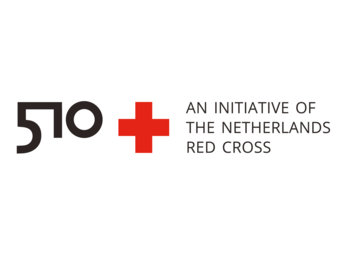Forecast-based financing in the Philippines
Closing the gap between disaster risk reduction and emergency relief
This project, which began in 2017, seeks to reduce the humanitarian impacts of typhoons and floods in high-risk areas of the Philippines, and to ensure faster recovery in the affected areas - with a particular focus on reducing the loss of life and damage to livelihoods and shelter.
Through the project, the Philippine Red Cross and the German Red Cross have engaged disaster-management and forecasting officials at the national, regional, provincial and municipal levels to develop two early action protocols (EAPs): one for cyclones and one for floods. This process has included consultation workshops, technical studies (e.g., on shelter-strengthening kits), training and simulations, as well as advocating for the forecast-based financing (FbF) approach. The project is currently developing an EAP for drought.
Key facts
Start/end date
August 2017 – December 2022
Hazards covered
Floods | Typhoons | Drought (under development)
Regions covered
Floods:
Four river basins (Agusan, Bicol, Cagayan, Panay) in eight provinces: Albay, Augsan del Norte, Augsan del Sur, Cagayan, Camarines Sur, Capiz, Davao de Oro, Isabela
Typhoons:
25 provinces: Albay, Apayao, Aurora, Cagayan, Camarines Norte, Camarines Sur, Catanduanes, Cebu, Davao Oriental, Davao de Oro, East Samar, Isabela, Kalinga, Leyte, Masbate, North Samar, Nueva Ezcija, Nueva Vizcaya, Quezon, Quirino, Sorsogon, South Leyte, Surigao del Norte, Surigao del Sur, West Samar.
Total for both hazards: 28 provinces
Early action sectors
Floods:
Agriculture | Livestock | Small businesses (urban)
Typhoons:
Agriculture | Livestock | Shelter
Anticipatory action protocols/plans in place
EAP for Typhoons approved in November 2019
EAP for Floods approved in June 2020
EAP for Drought under development
Activations
The EAP for Typhoons was activated ahead of Typhoon Paeng in October 2022 (interim report).
The EAP for Typhoons was tested for 200 households during Typhoon Tisoy (Kammuri) in December 2019, with funding from the DREF.
A small activation for drought took place in May 2019, with funding from this FbF project. Cash was transferred to 210 beneficiaries.
Population reached during activation
2,000 beneficiaries per activation
Key actors/implementing partners
Philippine Red Cross, with technical support from: German Red Cross, Finnish Red Cross, Red Cross Red Crescent Climate Centre, IFRC and the 510 Initiative of the Netherlands Red Cross. The project also works closely with provincial and municipal disaster risk reduction and management offices, and collaborates with different actors working on anticipatory action in the country such us OCHA, FAO, WFP, UNICEF and the Start Network.
Project description: anticipatory action in practice
Floods and typhoons are major sources of damage and destruction in the Philippines. The EAPs for typhoons and floods cover 28 provinces. They are also complementary: while less severe typhoons may not trigger the EAP for Typhoons, they may cause severe flooding and thus trigger the EAP for Floods.
High winds, storm surges and floods associated with typhoons destroy houses and crops, and disrupt fishing patterns. These disruptions to people’s lives and livelihoods can lead to negative coping strategies, such as migrating to find jobs away from their family, reducing food consumption, taking out loans, or pulling children out of school. The EAP for Typhoons, which was approved in November 2019, covers 25 provinces and aims to mitigate income losses for farmers and fishermen, and to reduce damage to houses, through the following actions.
- Evacuate livestock to safe locations close to human evacuation shelters and provide food and water for animals for three days. Ensuring animal safety protects this important livelihood asset, which can encourage people to be evacuated as well, rather than staying behind to tend to their animals.
- Strengthen houses to ensure people have homes to return to when the storm is over and spend less time and money on repairs.
- Early harvesting of mature food crops and abaca trees. The latter is an important crop, providing fibres which are sold to make a variety of commercial goods, and the production of which is the main livelihood in Catanduanes island.
The EAP for Typhoons is triggered when a typhoon is forecast to destroy at least 10 per cent of houses in at least three municipalities, and has a maximum lead time of three days. To calculate the predicted impact, a statistical model combines wind speed forecasts with data on damages caused by past storms and housing types. The trigger was developed with the support from 510 – an Initiative of the Netherlands Red Cross, and is currently f being handed over to the Operational Center from the Philippine Red Cross. The Office of Civil Defense in the Philippines has shown an interest in being briefed and trained on how the model for forecasting and triggering typhoons works.
Floods in the Philippines destroy crops and damage aquaculture operations. In urban settings, flood waters can interrupt small business activities and destroy merchandise. As with typhoons, these disruptions to livelihoods can lead to negative coping strategies. The EAP for Floods aims to reduce the economic impacts of extreme floods by supporting the following actions.
- Early harvesting of mature corn, rice and other high-value crops to prevent livelihood losses.
- Harvesting of mature fish from aquaculture operations to prevent loss of livelihood.
- Evacuation of livestock and key assets (for the reasons listed under ‘typhoons’).
- Relocating small urban businesses to ensure that their owners do not lose their merchandise in flood waters, and to allow them to continue sales and maintain their income.
For floods, it is proposed to trigger the early actions using GloFAS forecasts when the probability of reaching the five-year return period is more than 70 per cent. The maximum lead time to complete these activities is three days.
The actions in both EAPs are supported by cash-for-work activities in which the Philippine Red Cross hires farmers and fishermen to assist with early actions (e.g., shelter strengthening, building temporary structures for animals, harvesting crops). This provides community members with a source of cash to prepare their families for the event, or to offset losses.
The project is now working to develop a third EAP to address drought. A small-scale test activation for drought took place in 2019 and a feasibility study of potential triggers was carried out in February 2022.
In this project, the Philippine Red Cross coordinates with key government institutions, such as Office of Civil Defense, PAGASA (the meteorological department), the Department of Interior and Local Government, provincial disaster risk reduction and management offices, and the Department of Agriculture. Much of this coordination takes place through a national technical working group and provincial technical committees. Since the project began, the Philippine Red Cross and its partners have organized seven simulation exercises and four national dialogue platforms, as well as hosting the Asia-Pacific Regional Dialogue Platform in 2019.
Project impressions
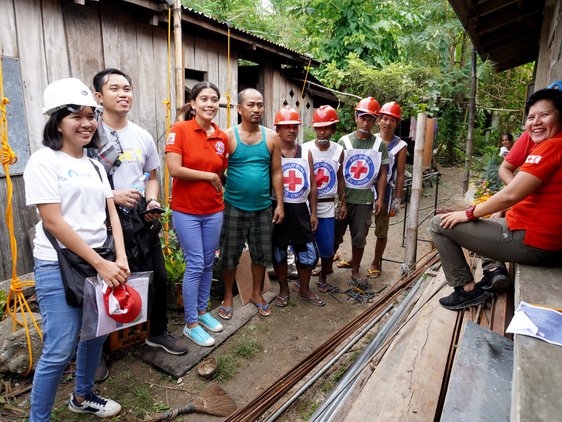
Philippines Red Cross volunteers and community in front of a reinforced house © Philippines Red Cross
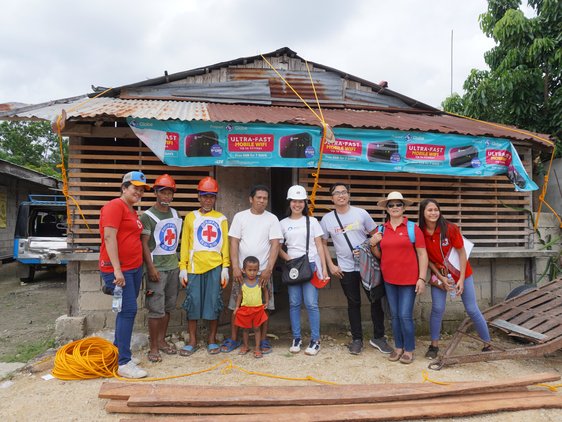
Philippines Red Cross volunteers and community in front of a reinforced house © Philippines Red Cross
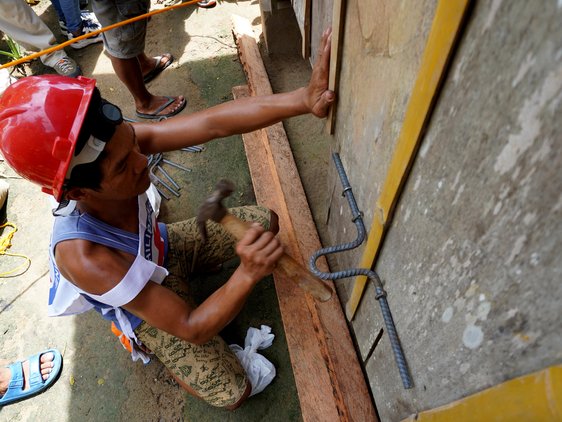
Philippines Red Cross volunteers and community in front of a reinforced house © Philippines Red Cross
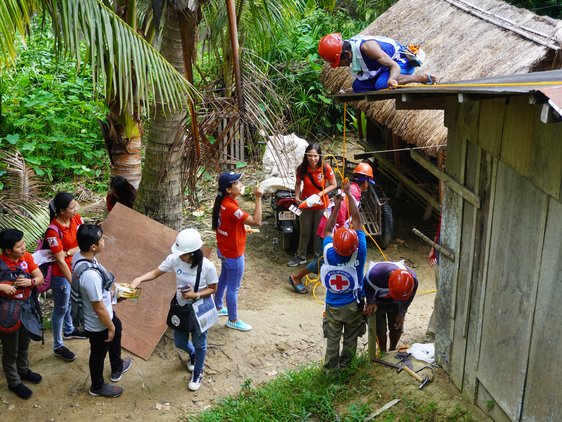
Philippines Red Cross volunteers and community in front of a reinforced house © Philippines Red Cross
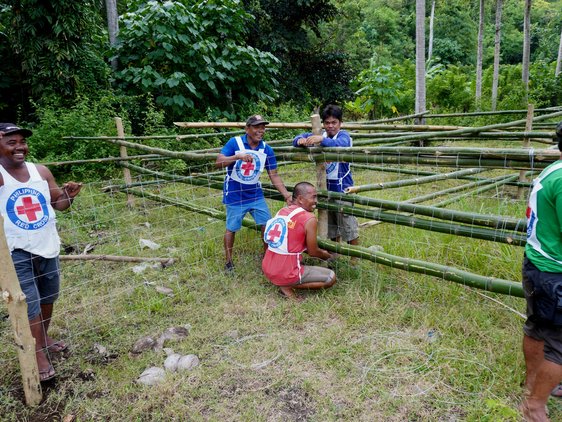
Philippines Red Cross Volunteers building a kraal for livestock evacuation © Philippines Red Cross
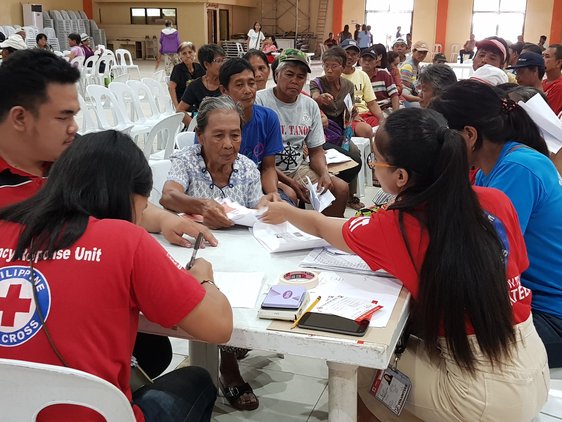
Philippines Red Cross Volunteers distributing cash as part of a simulation © Philippines Red Cross
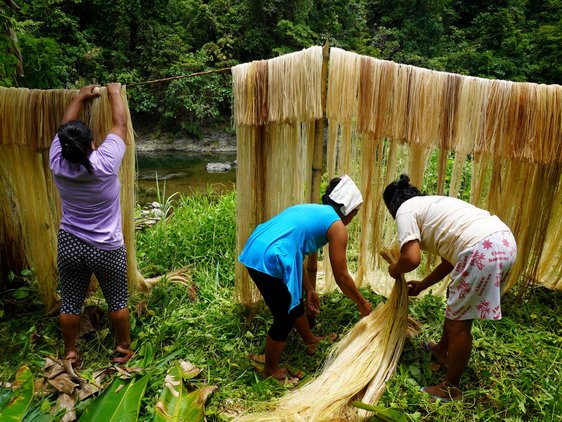
Philippines Red Cross Volunteers harvesting abaca to simulate early action © Philippines Red Cross
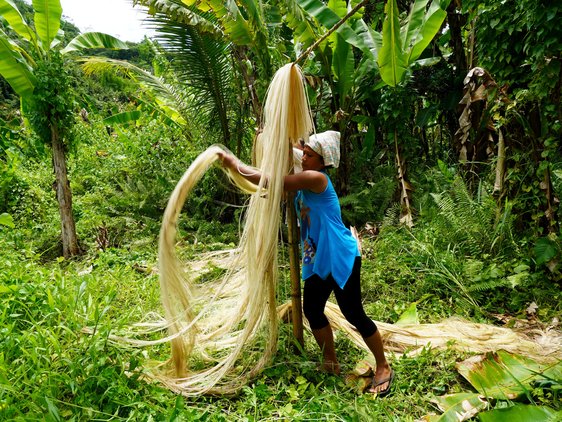
Philippines Red Cross Volunteers harvesting abaca to simulate early action © Philippines Red Cross
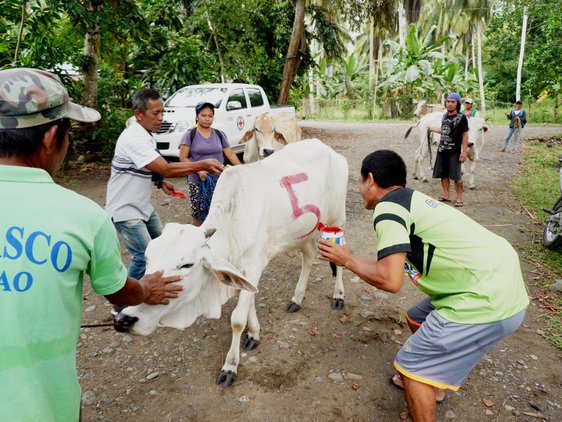
Philippines Red Cross Volunteers labeling livestock as part of the livestock evaluation © Philippines Red Cross
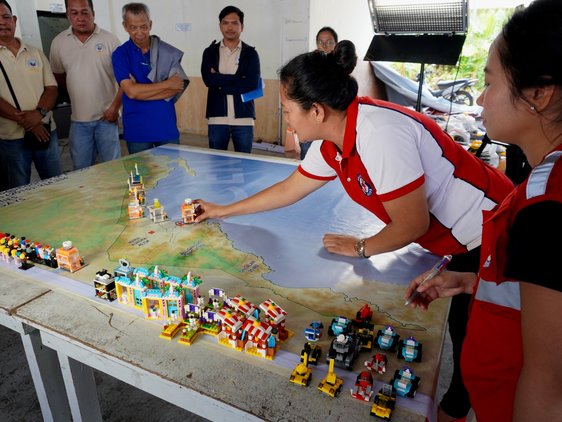
Philippines Red Cross Volunteers preparing for early activation simulation © Philippines Red Cross
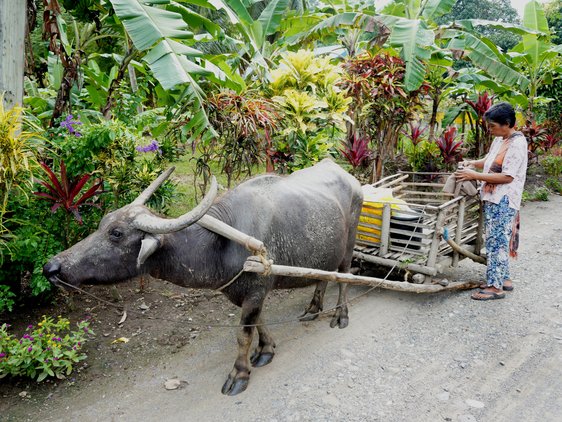
Philippines Red Cross Volunteers building a kraal for livestock evacuation © Philippines Red Cross

Philippines Red Cross volunteers and community in front of a reinforced house © Philippines Red Cross
Philippines Red Cross volunteers and community in front of a reinforced house © Philippines Red Cross
Philippines Red Cross volunteers and community in front of a reinforced house © Philippines Red Cross
Philippines Red Cross volunteers and community in front of a reinforced house © Philippines Red Cross
Philippines Red Cross Volunteers building a kraal for livestock evacuation © Philippines Red Cross
Philippines Red Cross Volunteers distributing cash as part of a simulation © Philippines Red Cross
Philippines Red Cross Volunteers harvesting abaca to simulate early action © Philippines Red Cross
Philippines Red Cross Volunteers harvesting abaca to simulate early action © Philippines Red Cross
Philippines Red Cross Volunteers labeling livestock as part of the livestock evaluation © Philippines Red Cross
Philippines Red Cross Volunteers preparing for early activation simulation © Philippines Red Cross
Philippines Red Cross Volunteers building a kraal for livestock evacuation © Philippines Red Cross
Lessons learnt
Information, education and communication materials have been developed and published on the Anticipation Hub’s learning section. The project has developed several guidelines, videos and case studies to gather evidence of successful implementations and to advocate for the institutionalization of the FbF approach.
- A test activation of the EAP for Typhoons in 2019 showed that the kits to strengthen houses against wind and rain can be successfully installed by trained volunteers, workers and community members working together in the very short time frame between the trigger and storm making landfall (around 72 hours). This includes prior steps, such as household identification, transport and certain procurements.
- The project has had considerable success in integrating with government structures for disaster risk reduction at the provincial and local levels. This has been achieved through joint advocacy with other partners in the Philippines, such as WFP, FAO and the Start Network. The Philippine government has issued a memorandum (Memorandum 60) that allows local government units to access funding available for emergency responses for early actions - when an extreme event is forecast to affect at least 15 per cent of their population. A case study of how this can be implemented is under way.
- The Philippines provides strong examples of the use of local financing in FbF, and in scaling up this approach. For example, the Philippine Red Cross has signed a memorandum of understanding with Samar Province Local Government to allocate funds for financing the EAP for Typhoons.
- For its anticipatory action initiatives in the Philippines, the United Nations Central Emergency Response Fund is using the probabilistic trigger developed by the Red Cross 510 model, proving that the Philippine Red Cross and the German Red Cross are heavily involved in coordinating anticipatory actions within the country.
FbF [supports] the local government units (LGUs) in practicing [their] capacity to adapt the fundamental principle of [a] 'whole of society' approach in dealing with disaster risk reduction and management. This brings the high risk and most vulnerable [people] to the centre, and [the] pillar of emergency preparation with logistical support from the LGU and to maximize the local institutional resources. This also initiates discussion on government financial processes in [...] emergency situations, including project procurement management planning.
[This project] made us realize that there are more efficient and effective ways [to reduce] the risk brought about by disasters [...] It gave the chapter an opportunity to have more partnership and engagements with the LGUs than our regular services. It gave us the chance to share knowledge [with] communities - that there are lots of ways for preparedness and response to disasters, one of which is [forecast-based financing].
New EAP of the Forecast-based Financing Project
Videos showing experiences of implementing early actions in the Philippines
On this page you will find short videos from the Philippines Red Cross highlighting their experiences in implementing or simulating the following early actions: shelter strengthening kits, fish harvesting, relocating micro-enterprises, livestock evacuation, rice harvesting and abaca harvesting.
Read more & watch videosA joint simulation on cash-based anticipatory action and shock-responsive social protection for floods in the Philippines
In 2021, the German Red Cross, the Philippine Red Cross and FAO organized a joint simulation exercise to explore the possibility of connecting anticipatory cash transfers to existing social protection systems in the Philippines, with a focus on testing coordination procedures for multiple participating agencies to intervene simultaneously. Drawing on interviews with key informants, this case study focuses on the lessons learned during the simulation exercise and explores how this modality can build upon existing social protection programmes to increase its reach and efficiency.
Photo: The simulation exercise for anticipatory action ahead of floods in Camarines Sur, Philippines. © FAO
Download the case study hereBusiness relocation as an urban early action: lessons and challenges from a simulation in the Philippines
While most early actions implemented to date have been in rural environments, there are growing efforts to expand anticipatory action to urban settings. This case study outlines lessons from a Philippine Red Cross simulation of relocating urban microenterprises in advance of floods. The study highlights critical challenges in the design and execution of urban early actions, including managing competing demands for people’s time and developing effective beneficiary selection procedures.
Photo: A microenterprise selling essential food and commodities. © Philippine Red Cross
Further resources
- Factsheet: Philippines
- Philippines EAP for Typhoons: summary
- Philippines EAP for Typhoons: factsheet
- Philippines EAP for Typhoons: pocket version
- Philippines EAP for Floods: pocket version
- How local governments allocated funding for anticipatory action in the Philippines
- FbF news magazine
- Guidelines on livestock evaluation
- Business relocation as an urban early action: lessons and challenges from a simulation in the Philippines
Contact
Implementing Organization
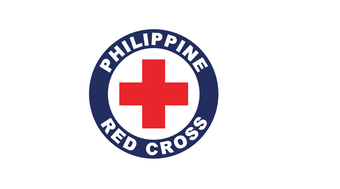
Philippine Red Cross
Learn moreTechnical partners
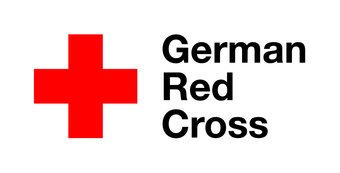
German Red Cross
Learn more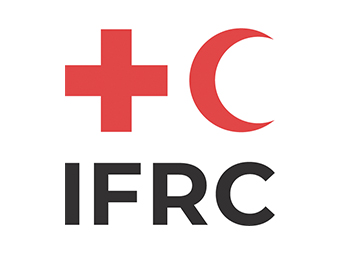
IFRC
Learn more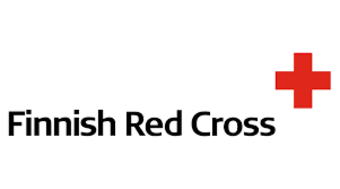
Finnish Red Cross
Learn more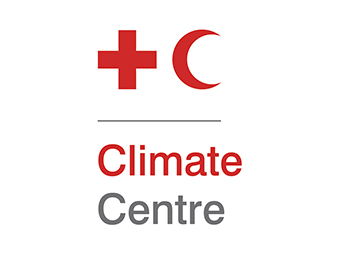
Red Cross Red Crescent Climate Centre
Learn more